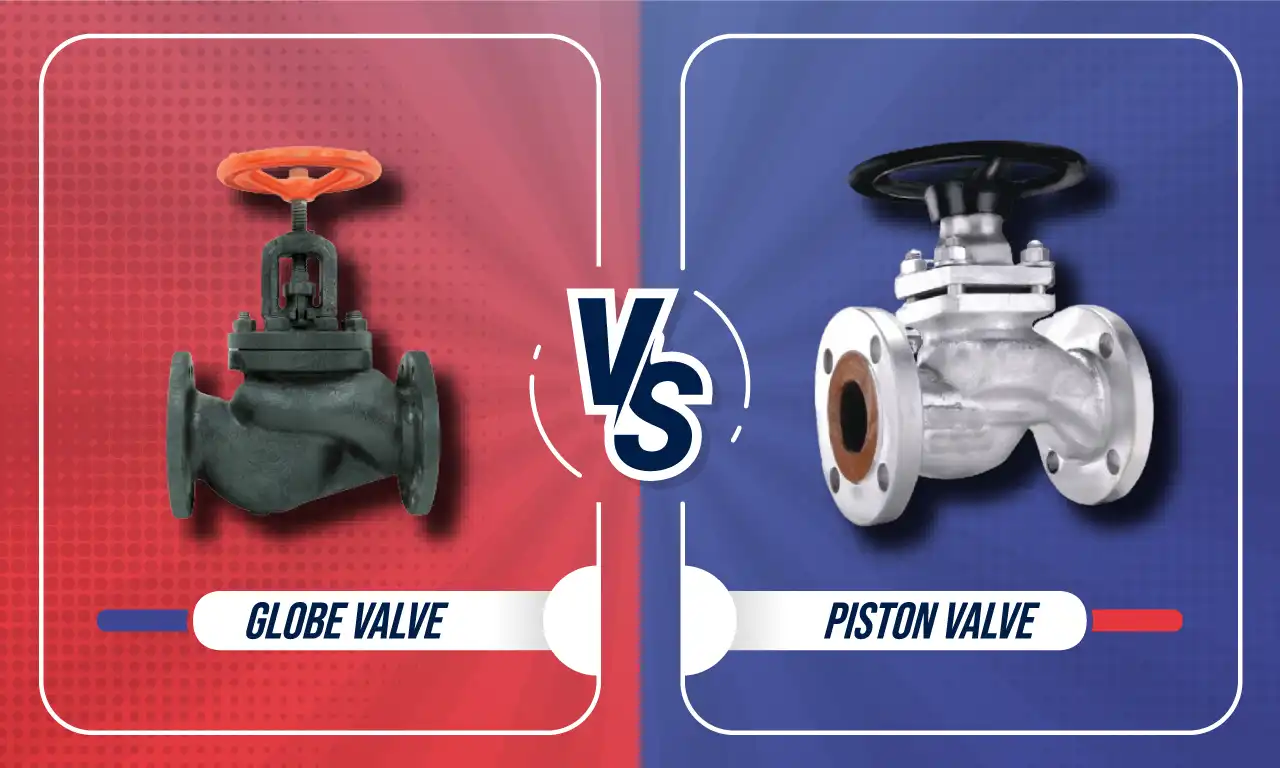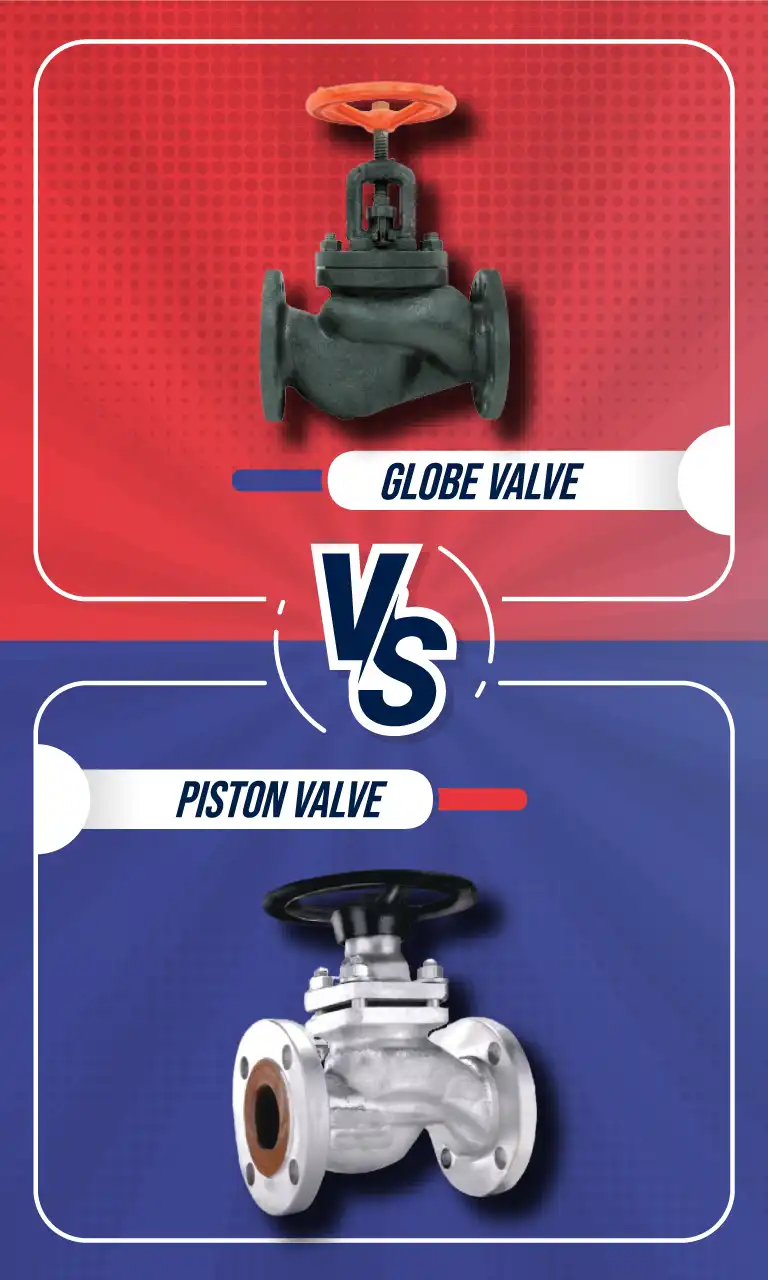Piston Valve vs. Globe Valve
- Home
- Blog

Choosing the Right Shutoff for Your Needs
In the world of fluid control, valves reign supreme. But with so many varieties available, selecting the right one for your application can be tricky. Today, we will delve into the realm of Piston valves and Globe valves, two popular options for shutoff and flow regulation.
Similarities:
Both Piston and Globe valves are primarily used for on/off flow control and isolation in pipelines.
The common features they share are:
Quarter-turn operation: A handle or actuator rotates 90 degrees to open or close the valve.
Variety of materials: Both come in various materials like brass, stainless steel, and even exotic alloys, suitable for diverse applications.
Key Differences:
Here’s where they diverge:
Internal Design: A piston valve utilizes a cylindrical piston that moves up and down within the body, regulating flow through ports. In contrast, a globe valve relies on a disc that rises and falls to control flow.
Flow Characteristics: Piston valves generally offer a more streamlined flow path with less resistance. This makes them ideal for high-flow applications. Globe valves, with their S-shaped flow path, create more resistance, making them better suited for lower-velocity applications where precise flow control is desired.
Pressure Drop: Due to their design, globe valves experience a higher pressure drop compared to piston valves when open. This can be a factor when dealing with high-pressure systems.
Sealing: Piston valves often employ replaceable sealing rings, offering a superior sealing capability. Globe valves typically rely on a disc sealing against a seat, which might require more frequent maintenance depending on the application.
Cost: Generally, piston valves are less expensive than globe valves due to their simpler design.
Choosing the Right Valve
So, which valve reigns supreme?
It depends on your specific needs
If you are looking for a High flow, low pressure drop: Piston valve is your champion.
Looking for Precise flow control, lower flow rates: Globe valve takes the crown.
Want Superior sealing, cost-effectiveness: Piston valve might be your king.
Additional Considerations:
Maintenance: Piston valves might require more frequent replacement of sealing rings.
Application: Globe valves excel in applications requiring throttling or fine-tuning flow.
Pressure Drop: Due to their design, globe valves experience a higher pressure drop compared to piston valves when open. This can be a factor when dealing with high-pressure systems.
Sealing: Piston valves often employ replaceable sealing rings, offering a superior sealing capability. Globe valves typically rely on a disc sealing against a seat, which might require more frequent maintenance depending on the application.
Space constraints: Piston valves often have a more compact design.
Essence
Both piston and globe valves are valuable tools in your flow control arsenal. By understanding their strengths and weaknesses, you can make an informed decision and select the perfect valve for a sustainable, efficient, and cost-effective operation.
At Perfect Engineering Services, we offer a wide range of both piston and globe valves, all crafted from premium materials and built to the highest quality standards. Our expert team can help you assess your specific needs and recommend the ideal valve solution for your project.












































































































































